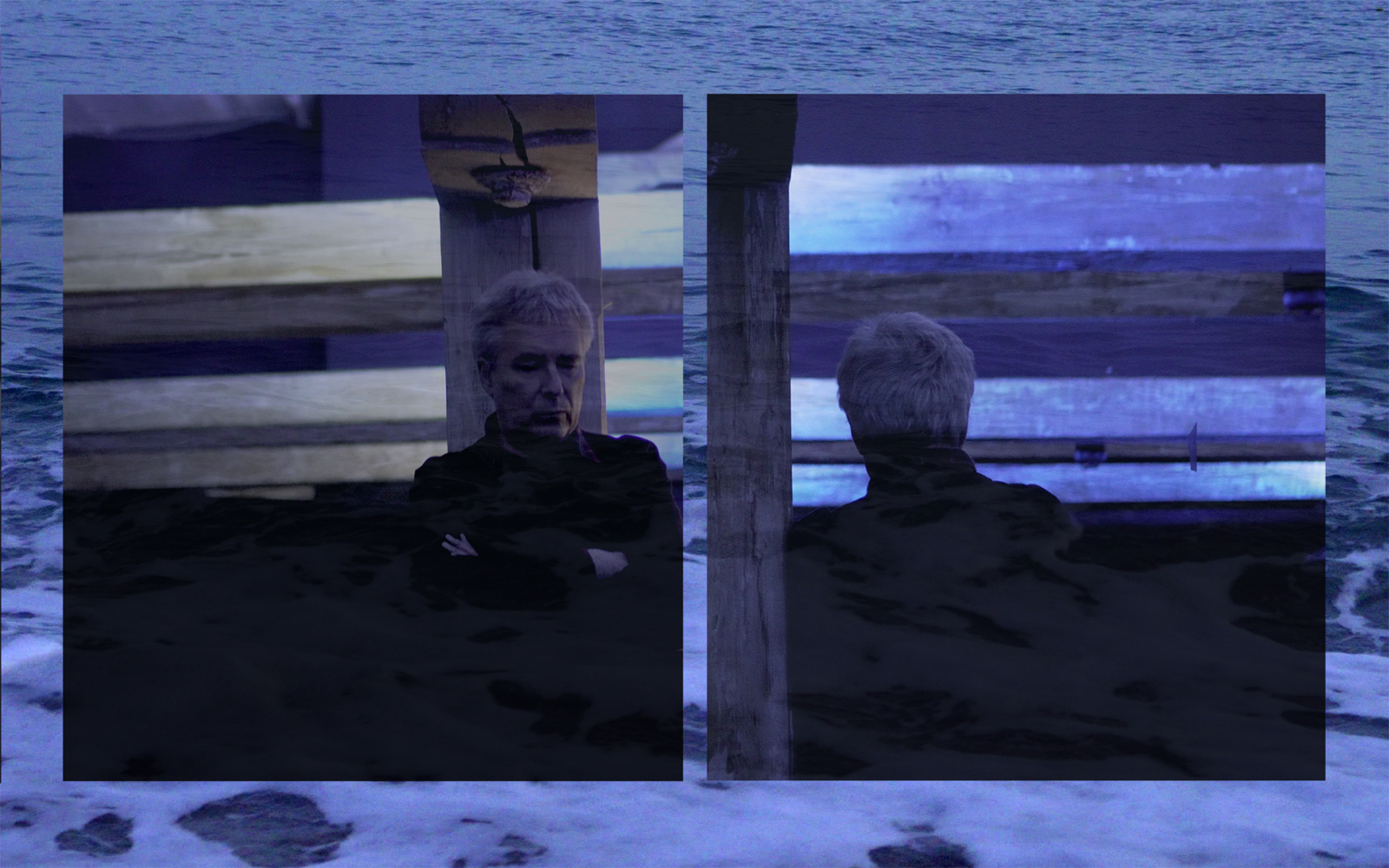From Sea to the River to the Sea (2018)
Csaba Hajnóczy & Lenke Szilágyi
Csaba Hajnóczy’s impetus to visit the Middle East was never political activism, but to step out of his personal comfort zone. Hajnóczy always considered the Palestinian Territories a no-go zone for himself and he became increasingly interested on how living would be possible in a place that has been featured negatively in the news over the past half century. Soon he realised that there is no Palestine without Israel, simply because it is occupied by Israel, so he decided to deal with Israel too, despite the State of Israel not being a 'discomfort zone' for him.
Hajnóczy’s concept was to work with field recordings and still images. During his expedition he was honoured to be accompanied by photographer Lenke Szilágyi, who did not hesitate to join the project inspiring a faithful collaboration, preparing edition and post-production works both on the spot and on later stages of the project. Their leading thread in this story became water : Arabic: ماء (mayy). Hebrew: מים (mahyeem). Consequently they decided to follow narratives concerning water - actually a central issue since Biblical times and even earlier. The Holy Waters of the Holy Land. The crops grown by water. Who rules over water. Shortage of water. The beauties and wonders of water.
The expressions "From Sea to Sea", or "From the River to the Sea", which give name to the piece, speak about - what seems irreconcilable - political wills and intentions; while hydro-geologically the territory between the Sea of Galilee, the Dead Sea, River Jordan and the Mediterranean Sea, in spite of whoever resides or reigns it, are one indivisible whole. Their process was to assemble those narratives by exposing the experiences and impressions using both visual and sound. In a diary-like way they composed a 10-episode spatial installative work, developed in residency and presented in performance at the Spatial Sound Institute.
As far as sound design is concerned, the possibilities of the 4DSOUND system provided Hajnóczy a stage-like composing process. Like the medium of polyphonic music in a classical opera can give space for a number of actresses/actors singing different aspects of a story simultaneously, in a meaningful unity (which would be meaningless turmoil in verbal theatre), the 4DSOUND system gave him space for a virtual unity of sounds, coming from various sources and manipulated differently creating all together an extensive narrative.
All the photographs and audio recordings were made at the Palestinian Territories and the State of Israel between the 4th and 29th November 2017. The presentation was Csaba Hajnóczy's DLA masterwork at Moholy-Nagy University of Arts Budapest.
—
![]()
Hajnóczy’s concept was to work with field recordings and still images. During his expedition he was honoured to be accompanied by photographer Lenke Szilágyi, who did not hesitate to join the project inspiring a faithful collaboration, preparing edition and post-production works both on the spot and on later stages of the project. Their leading thread in this story became water : Arabic: ماء (mayy). Hebrew: מים (mahyeem). Consequently they decided to follow narratives concerning water - actually a central issue since Biblical times and even earlier. The Holy Waters of the Holy Land. The crops grown by water. Who rules over water. Shortage of water. The beauties and wonders of water.
The expressions "From Sea to Sea", or "From the River to the Sea", which give name to the piece, speak about - what seems irreconcilable - political wills and intentions; while hydro-geologically the territory between the Sea of Galilee, the Dead Sea, River Jordan and the Mediterranean Sea, in spite of whoever resides or reigns it, are one indivisible whole. Their process was to assemble those narratives by exposing the experiences and impressions using both visual and sound. In a diary-like way they composed a 10-episode spatial installative work, developed in residency and presented in performance at the Spatial Sound Institute.
As far as sound design is concerned, the possibilities of the 4DSOUND system provided Hajnóczy a stage-like composing process. Like the medium of polyphonic music in a classical opera can give space for a number of actresses/actors singing different aspects of a story simultaneously, in a meaningful unity (which would be meaningless turmoil in verbal theatre), the 4DSOUND system gave him space for a virtual unity of sounds, coming from various sources and manipulated differently creating all together an extensive narrative.
All the photographs and audio recordings were made at the Palestinian Territories and the State of Israel between the 4th and 29th November 2017. The presentation was Csaba Hajnóczy's DLA masterwork at Moholy-Nagy University of Arts Budapest.
—
